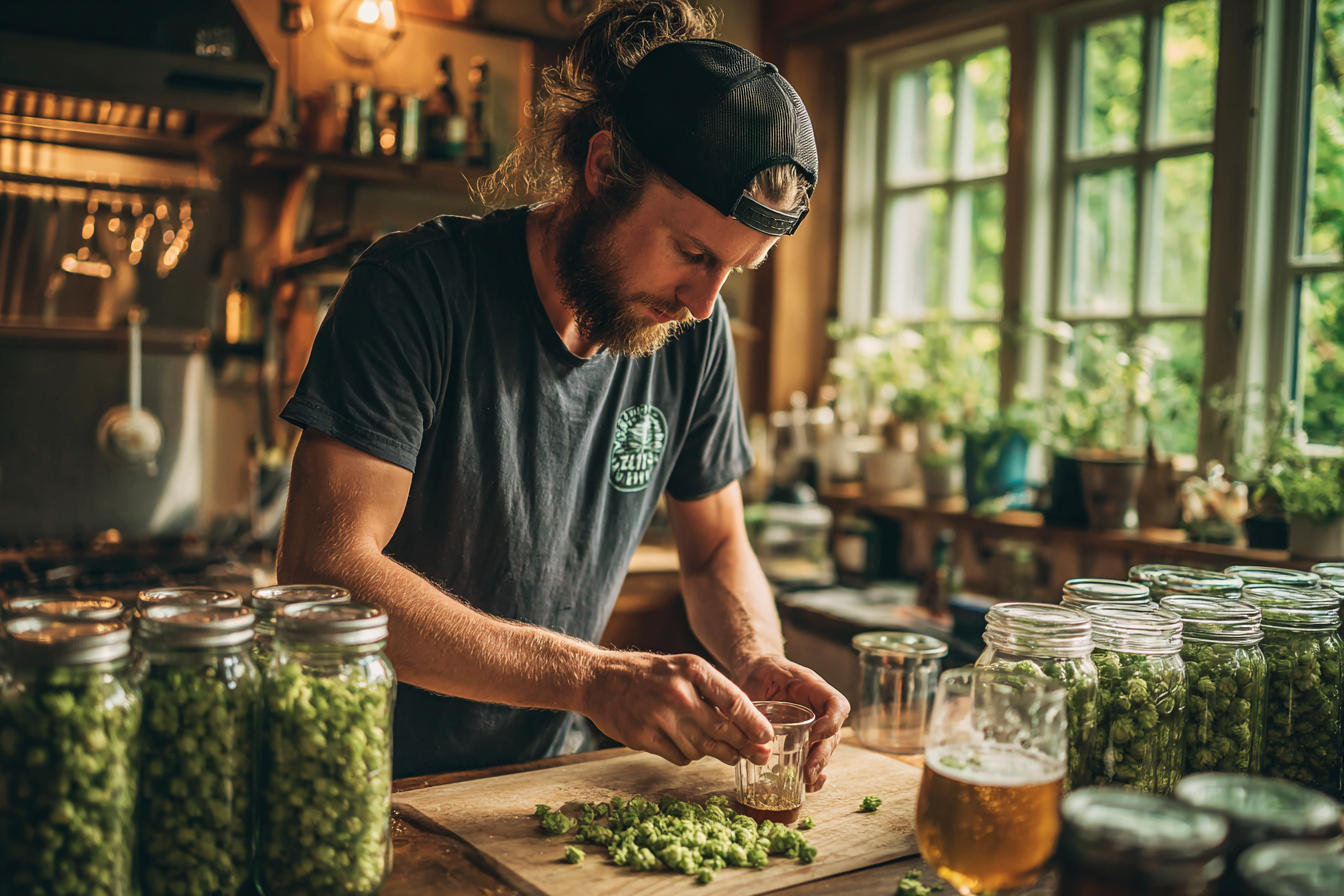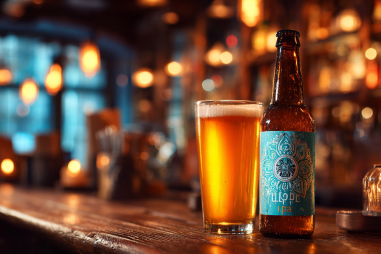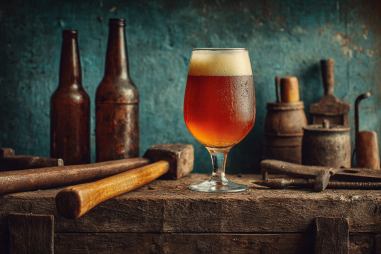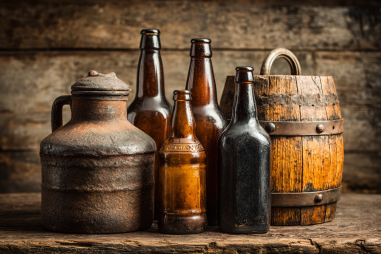Session IPAs have become a beloved choice among craft beer enthusiasts and homebrewers alike. Known for their delightful hop aroma and flavor without the heavy alcohol content, these beers offer a refreshing experience that you can enjoy multiple times in a session. If you’ve ever wondered how to brew a flavorful yet low-alcohol Session IPA, you’re in the right place. This guide will take you through the essential steps, ingredient choices, and brewing techniques to craft a perfect Session IPA that balances taste and drinkability.
Introduction to Session IPA Style
Session IPA is a substyle of India Pale Ale that is characterized by a lower alcohol by volume (ABV), typically ranging from 3% to 5%, while maintaining the hop-forward profile that IPAs are famous for. The term “session” refers to the ability to enjoy several beers in one sitting without getting overly intoxicated. Originating as a response to high-ABV craft beers, Session IPAs focus on being flavorful yet light.
Because of their approachability, Session IPAs are a great style for homebrewers who want to explore hop-centric beers without the intensity of higher alcohol. Understanding this style’s history and characteristics will help you tailor your brewing process to achieve the desired balance.
Key Characteristics of Session IPA
Session IPAs are defined by several core attributes that distinguish them from traditional IPAs:
- Lower Alcohol Content: Generally between 3-5% ABV, allowing for extended enjoyment.
- Hop-Forward Flavors and Aromas: Despite lower alcohol, these beers retain prominent hop bitterness and aromatic qualities.
- Light to Medium Body: The malt bill is designed to keep the beer crisp and clean without excessive sweetness or heaviness.
- Moderate Bitterness: The IBU typically ranges from 40 to 50, enough to maintain balance without being overwhelming.
- Crisp and Refreshing Finish: The finish is usually dry, encouraging drinkability.
These attributes guide the ingredient selection and brewing choices, shaping each phase of the brewing process.
Choosing the Right Malt and Hops for Session IPAs
The backbone of your Session IPA starts with careful selection of malt and hops, which directly impact flavor, bitterness, and aroma.
Selecting Malt
For malt, the goal is a lighter base that supports the hop character without overpowering it. Common malt choices include:
- Pale Malt (2-Row or Maris Otter): Forms the primary base, providing a clean, malty backbone.
- Light Caramel or Crystal Malts (10-20L): Use sparingly to add subtle sweetness and color depth without heaviness.
- Other Adjuncts: Sometimes small amounts of wheat or oats are included for improved head retention and mouthfeel.
A restrained malt bill helps maintain a light body and keeps the beer from becoming too rich, which is key for drinkability.
Choosing Hops
Hops are the shining star of a Session IPA. You want varieties that offer vibrant aromatic qualities and pleasant bitterness. Popular hop choices include:
- Citra: Citrus, tropical fruit notes.
- Simcoe: Earthy, pine, and fruity aromas.
- Mosaic: Complex berry, floral, and tropical hints.
- Amarillo: Orange-citrus and floral.
- Ekuanot: Herbal, citrus, and fruity tones.
Typically, hops are added at multiple stages — during the boil for bitterness, late in the boil or whirlpool for flavor, and dry-hopped for aroma to maximize impact without adding harshness.
Step-by-Step Brewing Process
Brewing a Session IPA follows many of the typical beer brewing stages but with specific attention to ingredients and timing to maximize hop character while keeping ABV low.
1. Mash
Start by heating your strike water and mashing your grains at around 150-152°F (65-67°C). This temperature range favors fermentable sugars, which results in a drier, lighter-bodied beer—perfect for session styles. Mash for about 60 minutes, then perform a mash-out at 170°F (77°C) to stop enzymatic activity.
2. Sparging and Boil
After lautering and sparging to extract sugars, bring your wort to a boil. The boil time is typically 60 minutes. Add your hops according to your recipe, balancing bitterness and late additions for flavor and aroma.
Some brewers cut the boil to 45 minutes to retain more volatile hop oils, but 60 minutes is a safe standard.
3. Whirlpool or Hop Stand
After the boil, whirlpool or hop stand addition of hops can add substantial flavor and aroma without increasing bitterness too much. This step typically lasts 15-30 minutes at ~170°F (77°C).
4. Chill and Transfer
Rapidly chill the wort to yeast pitching temperature (usually around 65-68°F or 18-20°C) to avoid contamination and encourage healthy fermentation.
Fermentation and Conditioning Tips
Fermentation is where your beer really takes shape; choosing the right yeast and managing conditions will help preserve the hop character and achieve a clean finish.
Yeast Selection
Choose a clean-fermenting ale yeast strain with moderate attenuation such as American Ale yeast (e.g., Wyeast 1056, Safale US-05, or White Labs WLP001). These strains produce minimal esters, allowing the hops to shine. Some brewers experiment with lower fermentation temperatures (around 63-65°F) to reduce fruity esters further.
Fermentation
Pitch yeast at the proper rate for your batch size and maintain stable fermentation temperatures. Primary fermentation usually takes 7-10 days. Keep an eye on the specific gravity (SG) to monitor progress.
Dry Hopping
Dry hopping is crucial to Session IPAs. Add hops towards the end of fermentation or early conditioning to maximize aroma. Use moderate to generous amounts of hops to make up for the lower bitterness and alcohol content.
Conditioning
Once fermentation is complete and dry hopping is done, allow the beer to condition for a few days to a week. This helps integrate flavors and eliminate any unwanted green hop character.
Common Challenges and Troubleshooting
Brewing Session IPAs can present a few hurdles, particularly because of their balancing act between hop intensity and lower alcohol. Here are some common challenges and solutions:
- Too Thin or Watery Mouthfeel: If the beer feels too light or thin, consider adding a small amount of dextrins or using specialty malts like maltodextrin or a touch of oat malt for body without increasing sweetness.
- Muted Hop Character: Hop oils are volatile and can fade during boiling. Utilize hop stands, whirlpool additions, and generous dry hopping to preserve aroma and flavor.
- Overly Sweet Finish: Mash temperature that’s too high can leave residual sweetness. Maintain a mash temperature in the lower range (150-152°F) for better attenuation.
- Off-Flavors: Avoid fermentation temperature spikes and ensure your yeast is healthy and properly pitched to prevent off-flavors such as diacetyl or phenolics.
- Overly Bitter: Balance bitterness by controlling early hop additions and adjusting whirlpool and dry hop quantities.
Packaging and Serving Suggestions
Proper packaging and serving methods will ensure your Session IPA maintains its intended flavor and freshness.
Bottling or Kegging
After conditioning, you can bottle or keg your beer. If bottling, carefully measure priming sugar to carbonate to around 2.3 volumes of CO2, which is typical for IPAs. When kegging, force carbonate to a similar level and keep your keg cold to preserve hop freshness.
Serving Tips
Serve your Session IPA in a clean glassware that enhances aroma, such as a tulip or shaker pint. Serve between 45-50°F (7-10°C), somewhat cooler than regular IPAs, to highlight the refreshing qualities.
Encourage enjoying your Session IPA fresh and within a reasonable timeframe, ideally within 2-3 months, as hop aromas degrade with age.
Savoring Your Homebrewed Session IPA
Brewing a Session IPA is a rewarding venture that invites creativity and experimentation. By focusing on a lighter malt profile, careful fermentation, and generous hop additions, you can craft a beer that is flavorful, aromatic, and perfectly balanced with low alcohol. Whether you’re sharing with friends or enjoying a solo session, your homebrewed Session IPA allows you to appreciate the art of craft brewing in a refreshing new way. So grab your gear, get brewing, and enjoy the satisfying taste of your handiwork—cheers!







